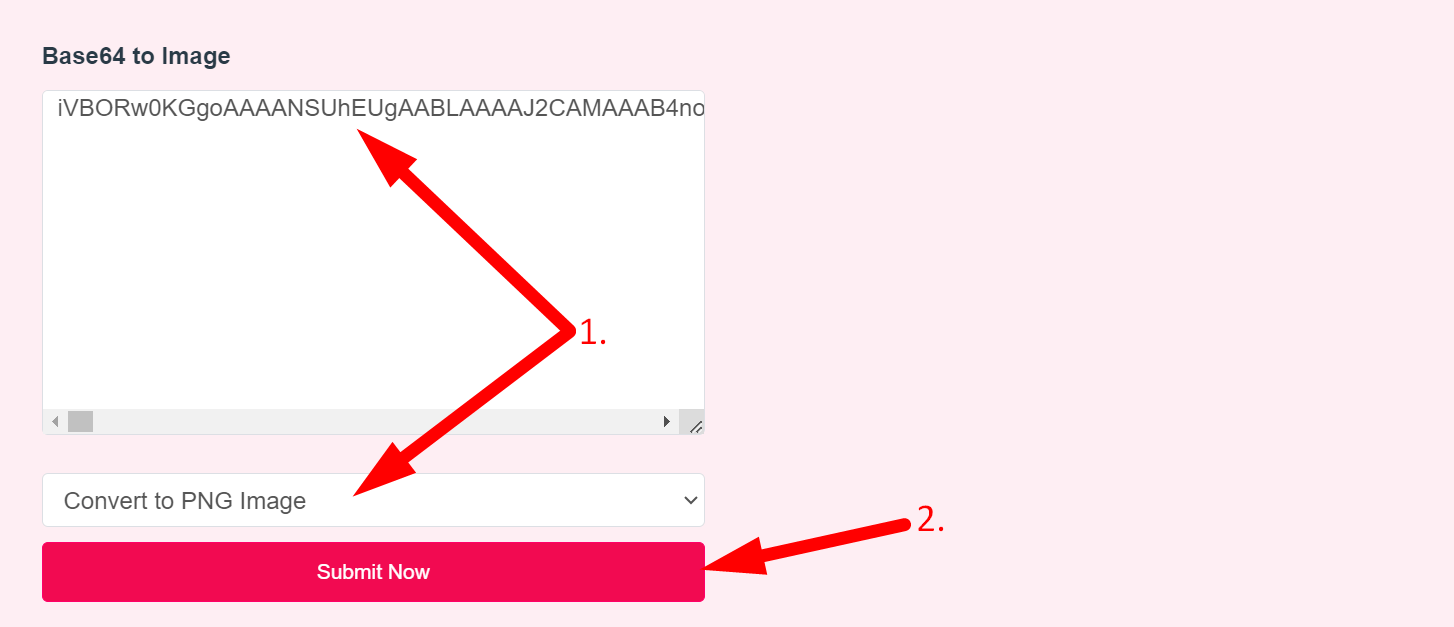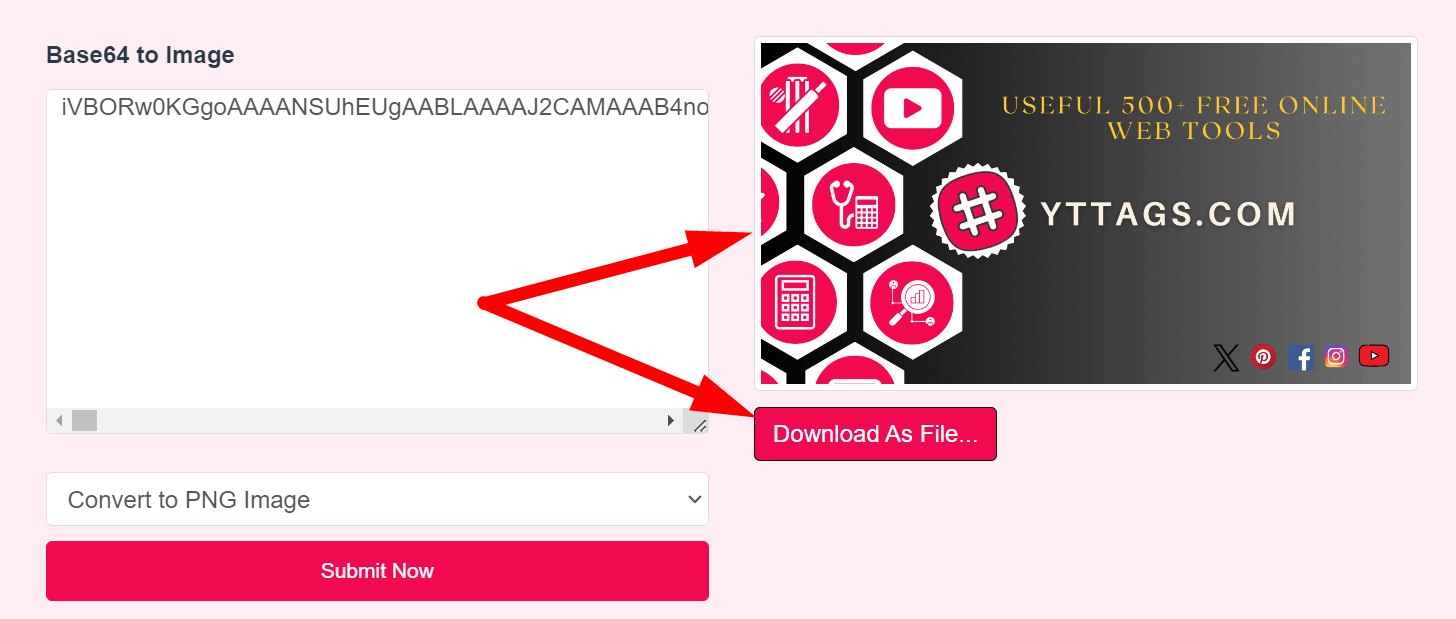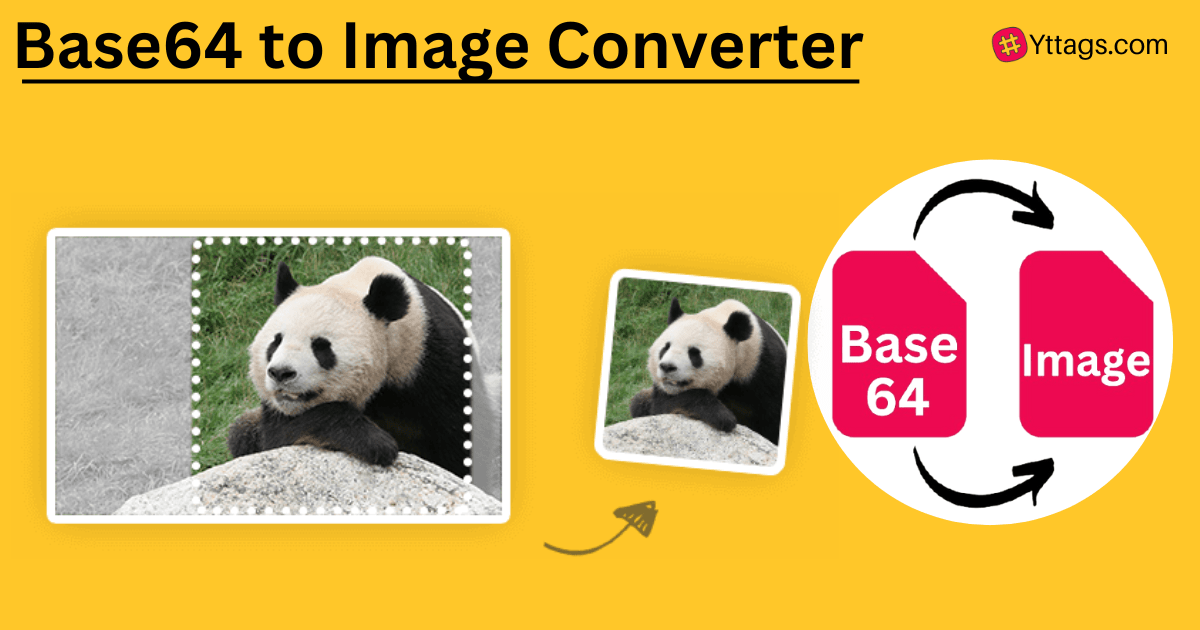Base64 to Image
Our Base64 to image online decoder tool allows you to quickly and easily convert Base64-encoded images to their original image format (i.e JPG, PNG, ICO, WEBP, AVIF).
Base64 to Image
If you use this great tool then please comment and/or like this page.
Average Rating: Tool Views: 449
Average Rating: Tool Views: 449
Subscribe for Latest Tools
How to use this Base64 to Image Tool?
How to use Yttags's Base64 to Image?
- Step 1: Select the Tool

- Step 2: Enter Base64 Code And Click On Submit Now Button

- Step 3: Check Your Base64 to Image Result

If you want to link to Base64 To Image page, please use the codes provided below!

FAQs for Base64 to Image
What is a Base64 to Image?
A Base64 to Image converter is a tool that decodes Base64-encoded image data, transforming it back into a recognizable image file format such as JPEG, PNG, or GIF.
When should you use Base64 for images?
Base64 is only useful for very small images. This is because when it comes to larger images, the encoded size of a picture in bytes will end up being much larger than JPEGs or PNG files. This can result in slow page load times and an increased amount of bandwidth usage for your site.
Why do I need to convert an image to Base64?
If you're building a web app that needs to store images locally (for example, as part of a user's profile), you can convert the image to Base64 and store it as a string in local storage. This allows you to store the image data without having to make an HTTP request to a server.
Can we convert Base64 to image?
After selecting the Image type, click on the "Generate Image" button. The tool decodes the Base64 Encoded string and displays the image. Click on the "Download Image" button to download that generated image. Base64 to Image Converter works well on Windows, MAC, Linux, Chrome, Firefox, Edge, and Safari.
What is the purpose of Base64?
Fundamentally, Base64 is used to encode binary data as printable text. This allows you to transport binary over protocols or mediums that cannot handle binary data formats and require simple text.